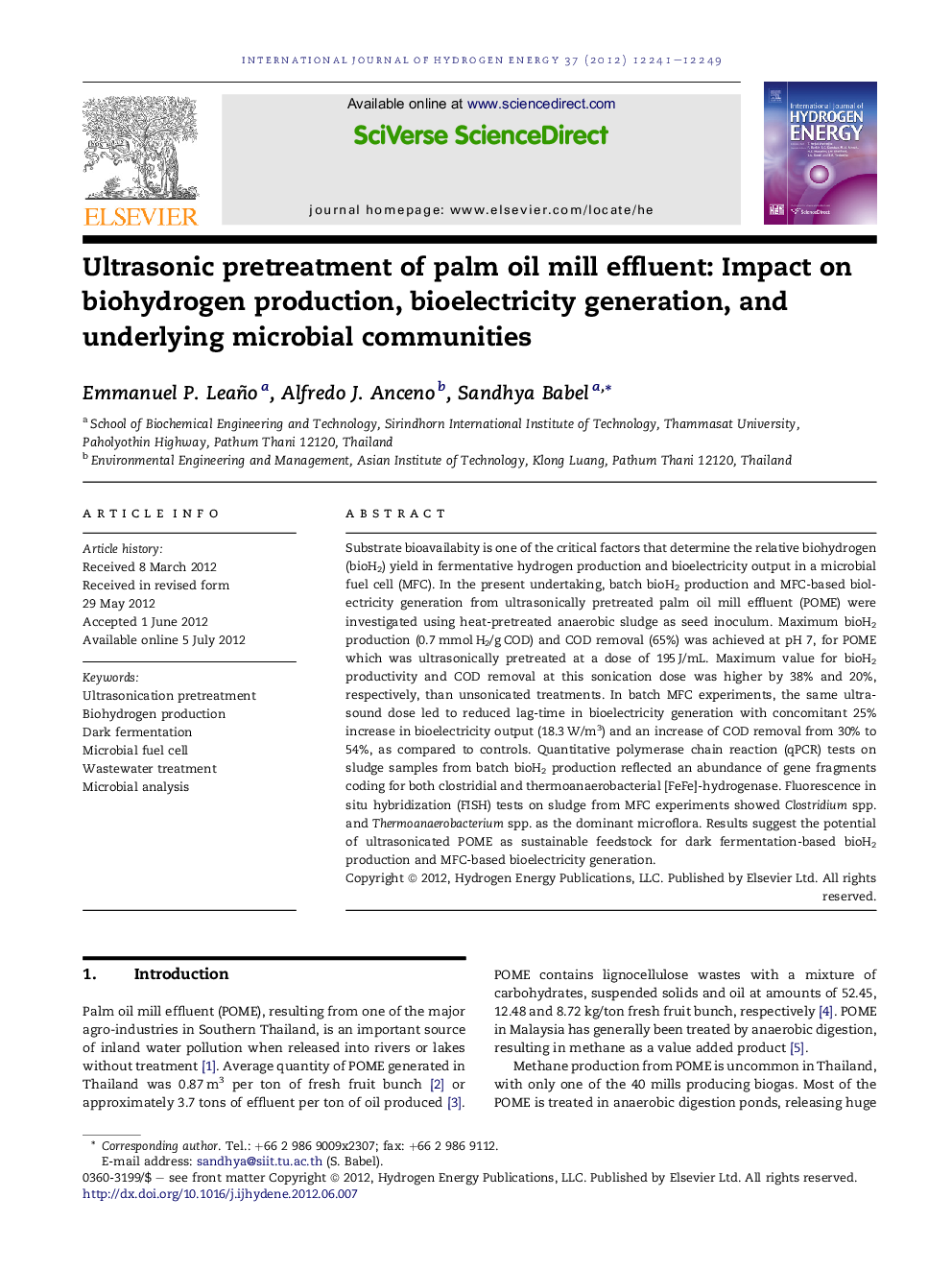| کد مقاله | کد نشریه | سال انتشار | مقاله انگلیسی | نسخه تمام متن |
|---|---|---|---|---|
| 1271059 | 1497552 | 2012 | 9 صفحه PDF | دانلود رایگان |

Substrate bioavailabity is one of the critical factors that determine the relative biohydrogen (bioH2) yield in fermentative hydrogen production and bioelectricity output in a microbial fuel cell (MFC). In the present undertaking, batch bioH2 production and MFC-based biolectricity generation from ultrasonically pretreated palm oil mill effluent (POME) were investigated using heat-pretreated anaerobic sludge as seed inoculum. Maximum bioH2 production (0.7 mmol H2/g COD) and COD removal (65%) was achieved at pH 7, for POME which was ultrasonically pretreated at a dose of 195 J/mL. Maximum value for bioH2 productivity and COD removal at this sonication dose was higher by 38% and 20%, respectively, than unsonicated treatments. In batch MFC experiments, the same ultrasound dose led to reduced lag-time in bioelectricity generation with concomitant 25% increase in bioelectricity output (18.3 W/m3) and an increase of COD removal from 30% to 54%, as compared to controls. Quantitative polymerase chain reaction (qPCR) tests on sludge samples from batch bioH2 production reflected an abundance of gene fragments coding for both clostridial and thermoanaerobacterial [FeFe]-hydrogenase. Fluorescence in situ hybridization (FISH) tests on sludge from MFC experiments showed Clostridium spp. and Thermoanaerobacterium spp. as the dominant microflora. Results suggest the potential of ultrasonicated POME as sustainable feedstock for dark fermentation-based bioH2 production and MFC-based bioelectricity generation.
► POME ultrasonication led to enhanced biohydrogen yield and power output.
► Increased ultrasound dose led to reduced lag-time and increase in bioelectricity generation.
► qPCR tests showed abundance of clostridial–thermoanaerobacterial hydrogenase genes.
► FISH tests showed Clostridium–Thermoanaerobacterium as dominant microflora.
► Ultrasonicated POME can be potential feedstock for hydrogen and electricity production.
Journal: International Journal of Hydrogen Energy - Volume 37, Issue 17, September 2012, Pages 12241–12249